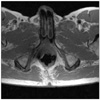Abstract
Treatment options for clinically localized prostate cancer include surgical extirpation, radiation therapy (external beam radiation therapy and/or brachytherapy), or watchful waiting. Cryosurgery has recently re-emerged as a developing technology and as a minimally invasive treatment option. There may be technical difficulties in placing cryoprobes in patient with a penile prosthesis. To the best of our knowledge, this is the first report of cryosurgical ablation of the prostate in a prostate cancer patient with a penile prosthesis.
With the recent introduction of novel, minimally invasive procedures for the treatment of prostate cancer, cryotherapy has become a feasible option as a viable alternative to traditional radical surgery and radiation therapy. As a result of better understanding of tumor cryodestruction at a molecular level, refinements in cryotechniques and improved patient selection, the results of cryotherapy are becoming more promising. Furthermore, the dramatic decrease in the number of complications after modern cryotherapy leads to a better quality of life, which may be a preferable option, especially for elderly patients with comorbidities.1,2 Because the cyroprobes is inserted through the perineum, cryotherapy has been limited in patient with penile prosthesis. We report a case of cryosurgical ablation of the prostate in prostate cancer patient with penile prosthesis.
A 72-year-old man presented with one year history of obstructive voiding symptoms. He had suffered from cardiac arrhythmia for several years. 10-year ago, he underwent penile prosthetic surgery due to erectile dysfunction. Digital rectal examination was not notable for a palpable abnormality of the prostate. Prostate-specific antigen (PSA) level was 16.22 ng/ml. Basic laboratory values, urinalysis and cytology were within normal limit. Ultrasound guided prostate needle biopsy demonstrated prostatic adenocarcinoma, 3 cores-positive of 12 cores and Gleason score 5 (3+2) at left peripheral zone of the prostate. Estimated prostate volume was 18 cc. Contrast enhanced endorectal magnetic resonance imaging of the pelvis revealed a localized prostate cancer with no evidence of periprostatic infiltration or pelvic lymphadenopathy and prosthesis materials in other view. (Fig. 1, 2) Other imaging modalities showed no evidence of metastatic lesions.
With the patient under regional anesthesia, he was placed in lithotomy position. A transrectal ultrasound probe was positioned using a holding device, and a brachytherapy template was positioned close to the perineum. The malleable penile prosthesis was palpated in the perineum, but there were no difficulties in placing the any cryoprobes. The ten cryoprobes were inserted through the perineum and positioned in the prostate under ultrasound guidance in an overlapping pattern to ensure complete coverage of the prostate. Three thermosensors were also positioned to monitor the temperature near the urethra, at the external sphinter and along Denonvilliers' fascia. Flexible cystoscopy was performed, and it was ensured that no probes was penetrated the urethra or bladder. Next, a urethral warming catheter was placed and continuously irrigated with warm saline (42℃). The probes were activated from anterior to posterior so that the advancing edge of the iceball can be monitored with ultrasound. Two freeze-thaw cycles were used. After cryosurgical ablation of prostate, urethral catheter was inserted and removed at 2 weeks later. Postoperative course was uneventful and the patient discharged at 2 days later.
Followup examination at 2 months later, PSA level was 0.24 ng/ml and voiding was well without irritative voiding symptoms.
Cryosurgery began in England in the 1840s when James Arnott used iced saline, was applied through hollow irrigating tubes, to treat gynecological tumors.3 It was not until the 1960s that cryosurgery was applied to urological conditions. Gonder et al.4 in New York began to use liquid nitrogen to treat bladder neck obstruction from both prostate cancer and benign prostatic hyperplasia (BPH). Improved techniques for percutaneous access to the prostate, coupled with the development of transrectal ultrasonography (TRUS) in the 1980s, led to renewed interest in cryosurgery of the prostate.5 In 2000, the first use of gas-driven cryoprobes was reported.6 The changes to gas-driven systems caused two major changes to cryosurgical technique. First adding a thaw capability with rapid transition from freezing to defrosting improved control of ice-ball formation and allowed faster procedure. However, more importantly the change permitted a dramatic reduction in the diameter of the cryoprobes.6 Ultra-thin probes with sharp tips allows direct transperineal penetration and placement without an insertion kit.7
There may be technical difficulties in placing the probes in patient with penile prosthesis. We use third-generation cryosurgery device (Seednet Gold System & Accessories, Galil Medical, Yokneam, Israel), it enables us to do cryosurgery of the prostate in patient with penile prosthesis. There are no difficulties in placing cryoprobes in that patient.
We think that cryosurgical ablation of the prostate in patient with penile prosthesis is possible procedure and no more contraindication.
Figures and Tables
References
1. Han KR, Belldegrun AS. Third-generation cryosurgery for primary and recurrent prostate cancer. BJU Int. 2004. 93:14–18.
2. Mouraviev V, Polascik TJ. Update on cryotherapy for prostate cancer in 2006. Curr Opin Urol. 2006. 16:152–156.
3. Arnott J. Practical illustrations of the remedial efficacy of a very low or anaesthetic temperature. I. in cancer. Lancet. 1850. 2:257–259.
4. Gonder MJ, Soanes WA, Shulman S. Cryosurgical treatment of the prostate. Invest Urol. 1966. 3:372–378.
5. Onik G, Porterfield B, Rubinsky B, Cohen J. Percutaneous transperineal prostate cryosurgery using transrectal ultrasound guidance: animal model. Urology. 1991. 37:277–281.
6. Zisman A, Leibovici D, Seigel YI, Lindner A. Prostate cryoablation without an insertion kit using direct transperineal placement of ultrathin freezing probes. Tech Urol. 2000. 6:34–36.
7. Rees J, Patel B, MacDonagh R, Persad R. Cryosurgery for prostate cancer. BJU Int. 2004. 93:710–714.




 PDF
PDF ePub
ePub Citation
Citation Print
Print




 XML Download
XML Download